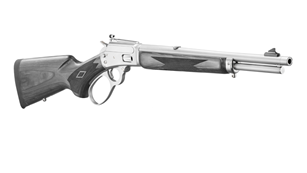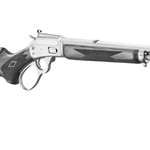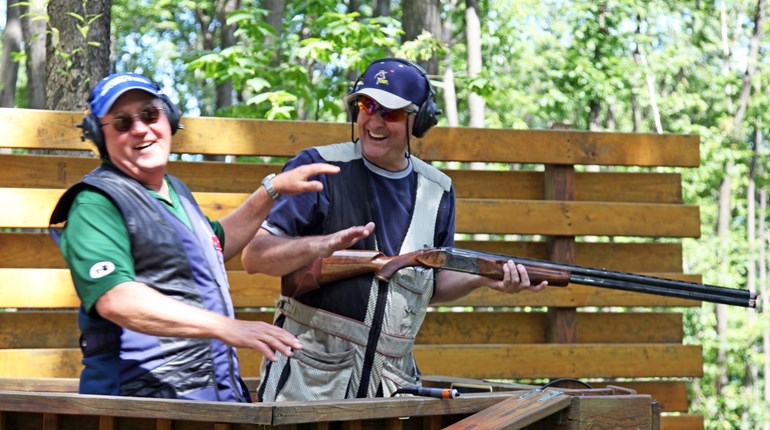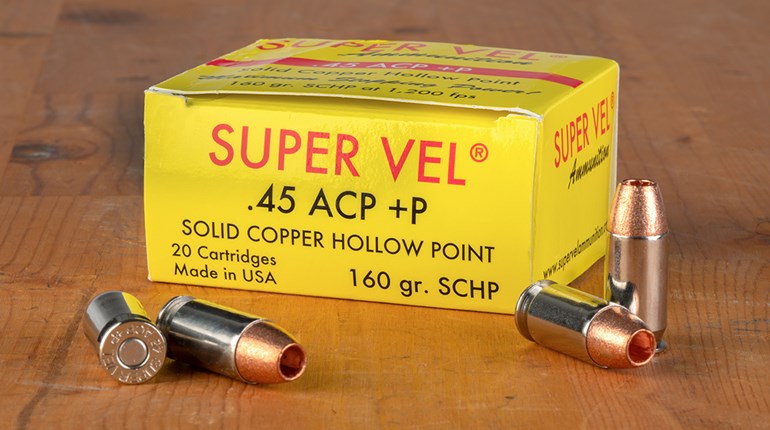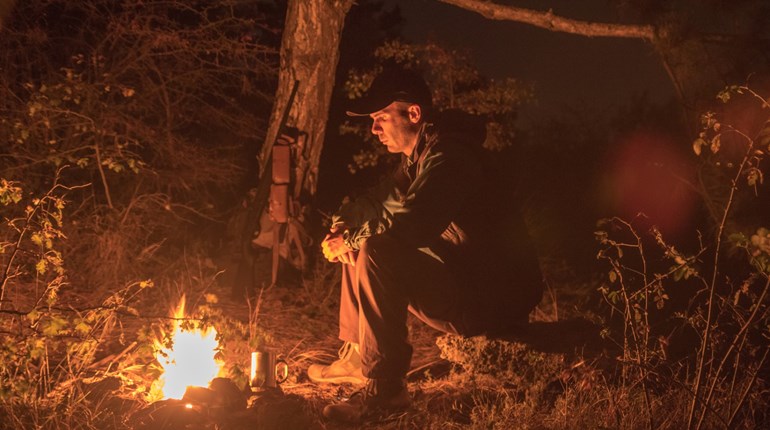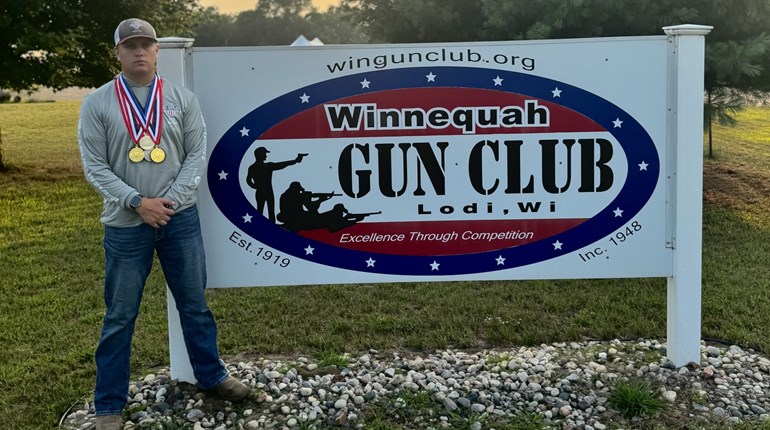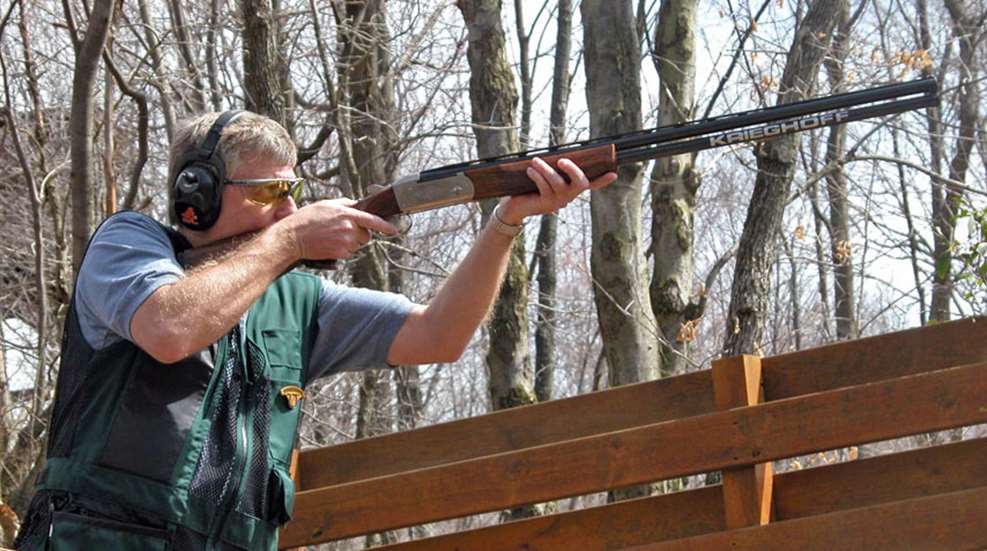
Are you tired of being knocked around by your firearm? Becoming bruised and sore from being hit by the butt of the stock when firing your shotgun or rifle is quite a common occurrence with new shooters…even experienced ones. In fact, a few weeks ago I was asked about this three times within three days. That got my mind focusing again on this problem. To reduce recoil, I first think about mechanical devices as arrestors and pads to reduce recoil—which helps a lot. Then a good friend who shoots a lot of handgun stopped by to ask about his bruised shoulder from firing one round of skeet with his new 12 gauge. My wife was there and said, “Remember when I started 45 years ago, and I had a bruised arm, and you told me about body position, etc.?”
The Shotgun & Rifle:
When firing 25 shells in a round of skeet or trap, a 12-gauge is usually used…and it kicks. To reduce some of the felt recoil, install a good slip-on or permanent recoil pad on a stock that fits the shooter. Then consider porting, etc. as covered in my recent article, 4 Gun & Optic Mods That Will Make You a Better Shooter. With equipment covered in that article, now it is time to cover information on how your body’s position when shooting has a lot to do with felt recoil.
Total Body Position and Gun Mount:
How you stand and lean into the firearm is important! If you stand sidewise, and then positioned a shotgun or rifle butt loosely onto the shoulder, such an angle will dictate where the butt ends up on firing which could be somewhere on the biceps. To feel this, stand erect, look at something in front of you and mount your firearm with your head on the stock. Now by leaning into the gun with your face on the stock, the whole butt will be snug in the shoulder pocket. If not, half of the stock will be above and off your shoulder which contributes to bruising.
Remember, if you’re holding that gun loosely and standing sideways on firing, the stock will bounce out and onto your biceps. Yet even when standing facing the target and not leaning into the firearm or your head off the stock, now your shoulder will take the hit. How I helped my friend is that I mounted the shotgun a few times as he watched and he then smiled and said, “I can see what I was doing wrong.” Then he practiced his gun mount and I could see him getting better.
The Elbow:
Back in my skeet competition days when I would shoot a few hundred rounds on a weekend, I had a friend who put both elbows up as he fired. I remember asking him why and he stated that due to that position, he does not feel recoil since that gives him a little more muscle under the butt pad and the shotgun stays where he put it. Since I am right-handed, I shoulder the firearm and lift the right elbow up just enough so that the guns butt rests and stays in the shoulder pocket which works for me. Try this: Put your hand on the shoulder pocket and raise up your arm’s elbow and you will actually feel the shoulder pocket. Then practice getting into this position with a verified empty shotgun or rifle at home!
Other factors to reduce felt recoil:
Is your firearm too light? Remember, light guns bounce more and thus hit the shoulder harder than heavy ones.
Type of Shotgun: A gas-operated semi-auto recoils less than others.
Ammo: In shotgun shells and rifle cartridges, there are those that are designed and loaded so to reduce recoil. These are still quite effective on game or clay targets!
Positions: In some shooting positions the shoulder area takes more punishment. As an example in rifle shooting, when firing offhand, this position spares the shooter the full force of the recoil generated. Here the body is free to naturally move under the backward force of the firearm on to the shoulder. On the other extreme, stand erect against a wall or get in the prone position, then fire and due the body’s inability to move, you feel more recoil.
If You Get a Bruise Anyway:
When I taught hunter education first-aid, I would tell the students to think of the word RICE when treating a bruise (or in medical terms, a contusion). Here, R is for REST of the area and I is to immediately apply an ICE pack wrapped in a shirt or towel (do not want to cause frost bite) for around 10 minutes off and on for a day or so. Depending on timing, this will reduce the amount of oozing blood from injured vessels under the skin and will help to keep swelling of the area in check. C is for COMPRESSION of the area with an elastic bandage (if practical), but not too much since that will restrict blood flow. Option two is to put pressure on the ice pack when holding it on the bruised area which also works. E is to ELEVATE the injured area, if possible. If you have been taking any medicines/herbs that thin the blood, medical consultation is recommended.
Good luck, get recoil under control with your shotgun and rifle, then for another option, take up handgun hunting. Safe Shooting!



